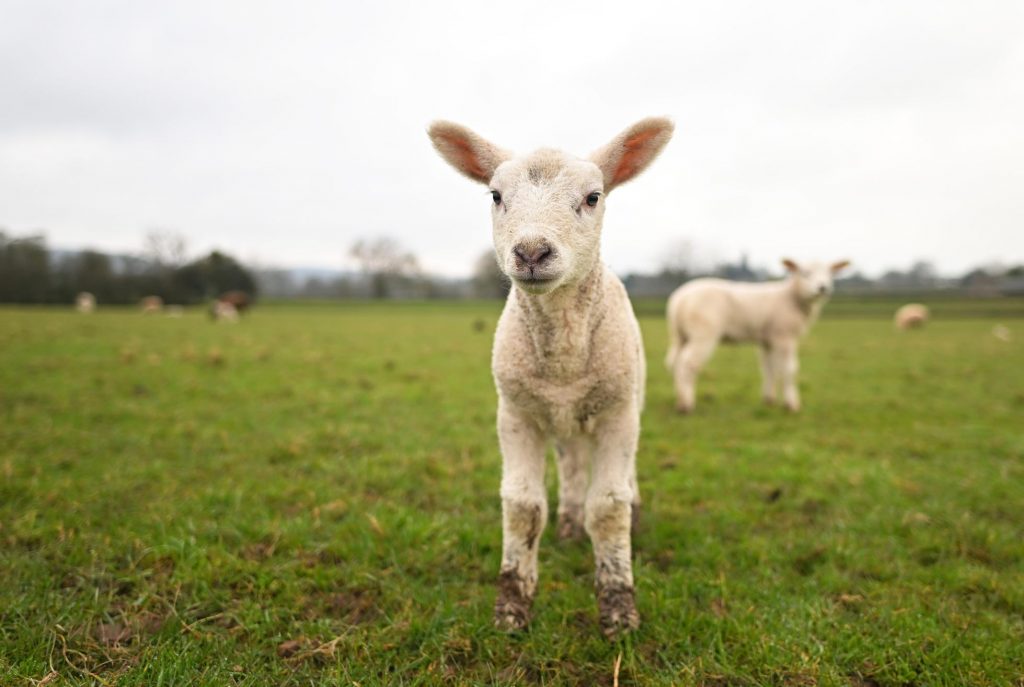Sheep Farming is Ancient History
From Roman hillside farms to biodynamic Californian estates, sheep have proven themselves in the vineyard, although their usage was curtailed for some time. Once commonplace in ancient agricultural systems, sheep farming disappeared from most modern vineyards in the twentieth centuries, replaced by tractors, herbicides, and synthetic fertilizers. But in a growing number of regions around the world, including California, winegrowers are bringing back the flocks.
Robert Irwin, aka The Sheep Guy, is founder of Kaos Sheep Outfit, a California sheep grazing company. “People forget: agriculture used to be circular. Animals were part of it. We broke that loop with chemicals and machines.”
Sheep offer tangible benefits in sustainable farming—fertilizing soils, managing cover crops, and even performing vineyard tasks typically reserved for machinery or hand labor. And for Angie Shannon, co-owner of Shannon Family of Wines in Lake County, California, it’s not just sustainable—it’s practical.
“We have 1,400 acres of vineyards, and it’s very hilly. Tractors roll,” Shannon says bluntly. “Our sheep are actually better and safer on slopes than tractors.”
Located high above Clear Lake, the Shannon ranch is the site for what the team calls “Project Ovis.” The goal is to deploy sheep strategically across the vineyard year-round, not just for weed control, but for erosion management, fire mitigation, and even canopy thinning.
“They help prevent erosion by the way they walk,” Shannon explains. “It actually creates micro-terracing.”
The approach echoes older traditions that long preceded the arrival of diesel engines and synthetic sprays. Mediterranean shepherds historically guided flocks through fields and terraces, not just for wool and meat but for the fertility and labor they provided.
In an era of climate pressure, expensive labor, and growing consumer interest in regenerative practices, that model is looking timely again.
Sheep Farming = Nature’s Labor Force
With his decades of experience with sheep, Irwin is one of the staunchest supporters of sheep in the vineyards. “It’s about putting animals back on the land and allowing the cycles of nature to run again. That’s the whole point of regenerative. It’s the ultimate composting machine—it’s walking around, it’s fertilizing as it grazes.”
Shannon’s vineyard team has grown its program to include thousands of sheep and a coordinated seasonal rotation. Timing, protection, and animal welfare are central concerns.
“We’ve got over 6,000 ewes. And we rotate them through areas depending on the season and the crop cycle,” she says. “In winter, they’re in the vineyards, then they go out and have babies. And once the lambs are weaned, they come back and we rotate them all over Northern California.”
But sheep don’t just show up in winter. Shannon’s team has also learned to use them for targeted vineyard tasks during the growing season.
“During suckering season, we can use them for a couple of weeks before the vines push. They’ll actually sucker the vine themselves,” she notes.
The labor calculus matters. In some vineyards, leaf-pulling or suckering can run hundreds of dollars per acre in labor costs. Sheep, it turns out, can do the same job—sometimes more precisely.
“When you have sheep that are trained to eat suckers but not the fruit, and to stop when you need them to, that’s when it gets really interesting,” says Robert Irwin of Kaos Sheep Outfit. “They can reduce both labor and equipment use dramatically.”
Closed-Loop Farming
The holistic benefits are also environmental. Rather than applying fertilizers or tilling mechanically, the sheep create a closed-loop system of fertility, aeration, and organic matter. The result is a living, breathing vineyard floor.
“We’ve seen soil organic matter double in some blocks since we started grazing,” Irwin shares. “The microbial life, the root structures, the carbon content—all of it improves with proper grazing.”
Though Shannon Family of Wines is fully certified organic, Irwin believes any scale of farm can adopt some version of this model—even conventional growers looking to reduce input costs.
“I see this as scalable. You don’t have to be biodynamic to use sheep,” he says. “But they’re an excellent tool if your goal is resilience.”
Of course, this kind of system only works when the animals thrive. Both Shannon and Irwin emphasize high animal welfare standards—rotational grazing, guardian dogs, shade and water, and a full life cycle on pasture.
Listen to the Sheep
For winemakers seeking flavor through sheep farming, this is where the ancient and the innovative converge. Healthier soils yield more resilient vines and more expressive fruit. And it turns out, sheep know what to do—if you let them. “You just have to listen to the land,” Shannon says. “And sometimes, to the sheep.”

